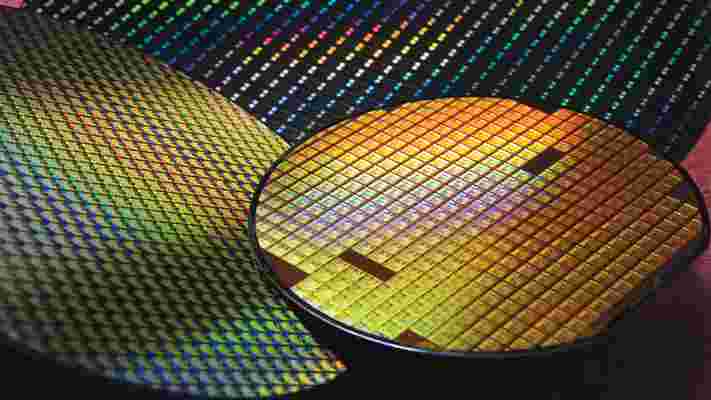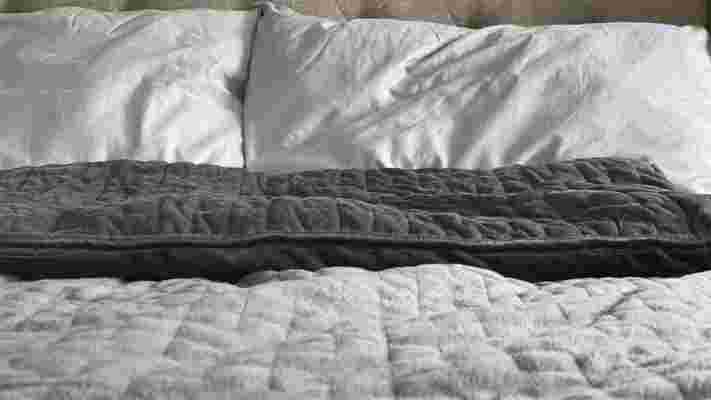If you've been on the market for a brand new graphics card recently, there's a pretty good chance that you've either not been able to get one at all, or if you have, you've paid an absurdly high price for it.
Ever since Nvidia and AMD launched their recent GPU generations, graphics cards have been both absurdly expensive and incredibly hard to find, thanks to a global silicon shortage.
But now that Intel is getting ready to enter the discrete graphics card market with its Arc Alchemist GPUs, it's easy to get optimistic about the shape of the GPU market later this year. I have sour news for you, though, it's not going to be that easy.
While these new GPUs will surely alleviate some of the pressure we've been feeling, and may even see prices drop a bit, Intel is going to be victim to the same limiting forces as AMD and Nvidia.

All about the manufacturing
One of the main reasons the silicon shortage hit so hard in the computing world is that AMD, Nvidia and Intel all rely on one company to at least some degree: TSMC, or the Taiwan Semiconductor Manufacturing Company.
And because these companies all rely on TSMC, all the promises we've heard about the GPU shortage coming to an end soon, kind of fall short when you realize TSMC came out in April 2021 and warned that the chip shortage could continue through 2022 in this report from The Verge .
While that definitely is a shame for AMD, we've also heard that Intel is going to be using the TSMC 6nm manufacturing process to produce the chips for its first generation of Arc Alchemist graphics cards, according to PCGamer .
So while Intel CEO Pat Gelsinger may have gone on Twitter to reassure gamers that Intel is going to try to push out millions of graphics cards every year to meet the unprecedented demand, it's hard not to ask how Team Blue is going to do that.

New foundries will take time
The lack of foundries to build new chips is only one part of the problem stopping more gamers from getting their hands on new graphics cards, but it is probably the most pressing one. The obvious solution would be to build new foundries, but that's easier said than done.
TSMC did work with the US government to start building a new chip foundry in Arizona back in 2020, via TechCrunch , but even though that was a couple years ago now, the plant isn't scheduled to start producing chips until 2024 - another two years from now.
Intel is also working to open new foundries, but it's likely that Team Blue's facilities will face a similar amount of set-up time. All of these new facilities are very much long-term solutions, leaving us scrambling for immediate relief. Immediate relief that's probably not coming.
The leadership of AMD, Nvidia and Intel have all assured us that these companies are working day and night to provide more graphics cards, but the problem is so much bigger than any one of them.
The awful part of that is that anyone that wants a graphics card that won't cost an arm and a leg is likely going to have to wait at least another year. That's even more painful to hear at the beginning of a new console generation, when games traditionally get a bit harder to run on older hardware.
OnePlus Nord 2T release timing and price leaked
We recently heard that a OnePlus Nord 2T could be in the works as a successor to the OnePlus Nord 2 , and now we have a clearer idea of when this might land, and what it might cost when it does.
According to leaker Yogesh Brar in collaboration with 91Mobiles , the OnePlus Nord 2T will arrive in India in April or May. Since this leak is specifically for India it's possible that other regions could get a different launch date, but we'd think most places would get it at around the same time.
Brar goes on to say that the OnePlus Nord 2T will apparently cost between Rs 30,000 and Rs 40,000, which equates to around $400 / £300 / AU$570 to $535 / £400 / AU$760. Though as ever conversions won't be accurate.
Brar also comments on the OnePlus Nord CE 2 here, saying that it will retail for between Rs 25,000 and Rs 30,000, converting to around $335 / £250 / AU$475 to $400 / £300 / AU$570.
The only other price leak we've seen for that phone (which is rumored to land on February 11 ) also comes from Brar and is slightly lower , so presumably this is a revised estimate.
OnePlus Nord 2T rumored specifications
There's no specs information here, but recently OnLeaks (another leaker) tipped the Nord 2T's specifications in collaboration with Digit . Apparently the smartphone could sport a 6.43-inch 1080 x 2400 AMOLED display coupled with a 90Hz refresh rate.
It may also house a MediaTek Dimensity 1300 chipset accompanied by up to 12GB of RAM and up to 256GB of internal storage. In terms of the OS, the Nord 2T might run OxygenOS 12, based on Android 12.
The source adds that the OnePlus Nord 2T might feature a triple-lens rear camera, consisting of a 50MP primary shooter, an 8MP ultra-wide, and a 2MP monochrome camera. At the front, the smartphone could rock a 32MP snapper. Finally, it might have a 4,500mAh battery and 80W charging.

Analysis: OnePlus Nord 2T? More like OnePlus Nord 3
The most puzzling thing about the OnePlus Nord 2T so far is its name, as this seems positioned to replace the OnePlus Nord 2 - a phone that landed in July.
So if the Nord 2T really lands in April or May then it will be almost a year newer, thus justifying a new number, given that OnePlus typically uses T models for six-month gaps.
It's especially odd as there wasn't a T version of the original OnePlus Nord, so why introduce one here? It could signify that the specs aren't much of an upgrade, which based on leaks they might not be, but even so, a new number could probably generate more sales, working in OnePlus' favor.
It's also possible that the release date is wrong, and we'll see the OnePlus Nord 2T sooner than has been said. But with the OnePlus Nord CE 2 likely to land imminently, the OnePlus 10 Pro probably getting a global release before long, and the standard OnePlus 10 presumably on the horizon too, it's a busy period for the brand.
So an April or May launch would make sense on that front, to give the other phones room to breathe, we're just not sure about the name.
Should I get a weighted blanket for anxiety?
It's no surprise that many people now use a weighted blanket for anxiety. We’ve all been living through a stressful time in history with many of us turning to them to help them keep anxiety and stress at bay, especially when trying to sleep.
Weighted blankets have been known to help relieve anxiety symptoms, with the heavy material creating a sensory calming feel as we fall asleep. However, anxiety is a complicated emotion, and some professionals believe that, even though a weighted blanket can relieve some of the symptoms of anxiety, it can’t cure them fully. Here, we’ll explore the benefits of a weighted blanket for anxiety and if it can help you achieve calming, restful sleep.
And for more ways to help you achieve better sleep, you can find other useful guides at TechRadar including the best mattresses and the best sleep earplugs .
A weighted blanket is a heavy blanket which has therapeutic qualities and is intended to calm you and allow you to fall asleep quickly. The blanket is designed to be heavier than a normal blanket and to make you feel as though you are being hugged. Many people who suffer with anxiety also have sleep problems, and while there are solutions available that can help, such as white noise machines and even some sleep apps , a weighted blanket helps to ease some of the symptoms associated with both poor sleep and insomnia, including an elevated heart rate, restless leg syndrome and anxiety.
Jon Manning, founder of mental health support service Arthur Ellis explains what anxiety is and why some of us suffer from it: "Anxiety is an emotion we all have, it’s essential for us and helps towards protecting us from harm. Anxiety helps us identify risks in different unknown situations, which is literally the definition. Anxiety is defined as that worry or nervousness around uncertain events in the future."
Therapists have used weighted blankets, in a professional capacity, for several years and they’ve become more mainstream in the last few years especially. However, not all weighted blankets are the same, with most being made with either cotton or linen, but some from flannel or bamboo. The filling inside that makes them heavier than most blankets, is normally made from micro glass beads, but it can also be sand or plastic poly pellets - so it’s worth doing your homework to see which one you feel most comfortable with.

But somebody else’s ideal weighted blanket may not be quite right for you, and this is down to the weight. The perfect weight can be determined by figuring out what 10 percent of your body weight is - as this will be the perfect weight for you. However, most weighted blankets start from 5.5kg and go up to around 10kg.
Research from Occupational Therapy in Mental Health shows that, after various trials, the use of weighted blankets can result in anxiety levels decreasing. But how do weighted blankets help anxiety?
Suzanne Guest , registered occupational psychologist revealed to TechRadar: "We don’t fully understand how weighted blankets work, but some people will report that it feels like they are being held and other people like the sensation of weight on their body. One theory is that it gives proprioceptive input. Proprioception is being aware of where our body is in space. The feeling of having weight on us can feel comforting.
"Sometimes people with anxiety or people on the autistic spectrum can have difficulty with being touched by people and so a weighted blanket can give comfort," Guest adds.
A weighted blanket can also be good for those with anxiety as it helps to raise serotonin levels. "Serotonin is a neurotransmitter that is essential for all of us. It’s released primarily to help stabilize our moods. If we have good serotonin levels, we are going to be much better equipped to deal with those difficulties we sometimes come up against in life," Manning explained to TechRadar.

"It has been shown in some studies that weighted blankets do promote the release of serotonin, however, this needs to be alongside a few other things that help too. Serotonin is mainly found in the hippocampus area of the brain which is responsible for regulating our emotions, amongst other functions.
Manning goes on to say that the hippocampus is similar to the liver, as it regenerates itself: "When it regenerates, it does it through a process called neurogenesis which helps the hippocampus be healthy enough to release that all important serotonin. Neurogenesis is stimulated mainly by exercise, sunlight and healthy foods."
Once we are getting those three things, Manning said that the hippocampus is ready for devices such as the weighted blanket, so it can pump out serotonin. "Bringing our attention to the present moment through those focus activities including using our blankets can also reduce cortisol release, the stress hormone and at the same time release dopamine, the happy hormone."
If you suffer from insomnia, is a weighted blanket right for you? A 2015 study by the Institute of Neuroscience and Physiology at the University of Gothenburg , Sweden, found that participants who had insomnia, but used weighted blankets as part of the study, slept for longer and also had better quality sleep .
Guest agreed: "If somebody is feeling particularly anxious, they will be experiencing an increase of adrenaline. Adrenaline prepares the body for flat fight or flight and makes the heart race and can make us feel twitchy as we are preparing our body to run to get out of danger. A weighted blanket can have a calming input on the body and so this will in turn reduce the heart rate and help alleviate the physical symptoms of anxiety."
Both experts do state, however, that even though a weighted blanket can be a way of relieving symptoms in the short term it can’t be a cure for anxiety, as this will only be relieved by addressing the issue that is causing the anxiety.
"Long-term, it would be prudent to address issues around anxiety and also develop strategies to manage anxiety provoking situations, this would be done with a therapist who can educate the individual about anxiety and its impact on the body and also thought processes," said Guest.